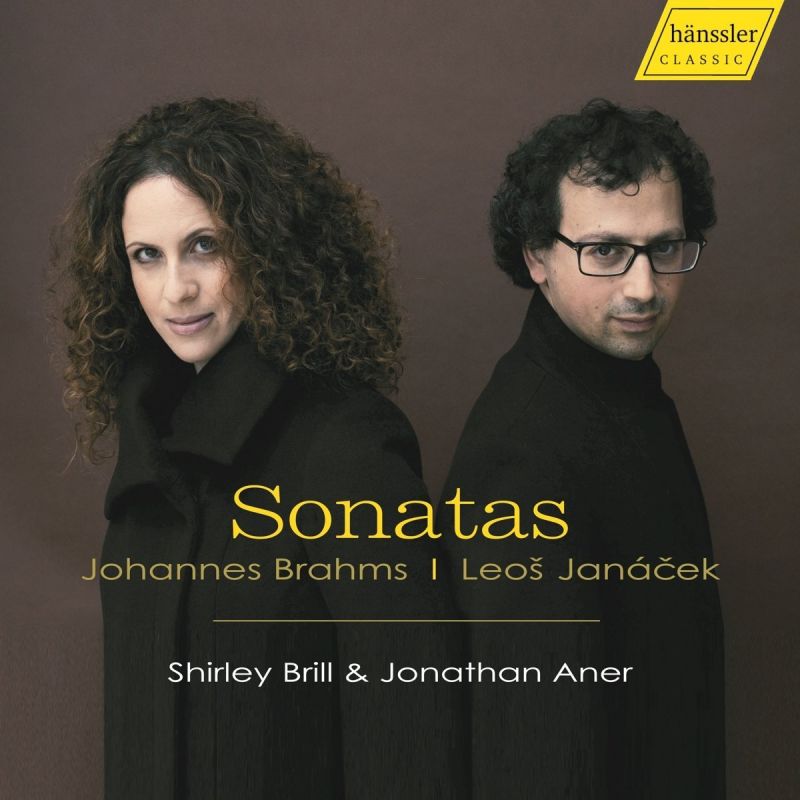BRAHMS; JANÁČEK Clarinet Sonatas
View record and artist detailsRecord and Artist Details
Composer or Director: Leoš Janáček, Johannes Brahms
Genre:
Chamber
Label: Hänssler
Magazine Review Date: 12/2017
Media Format: CD or Download
Media Runtime: 59
Mastering:
DDD
Catalogue Number: CDHC17001

Tracks:
| Composition | Artist Credit |
|---|---|
| Sonata for Clarinet and Piano No. 2 |
Johannes Brahms, Composer
Johannes Brahms, Composer Jonathan Aner, Piano Shirley Brill, Clarinet |
| Sonata for Clarinet and Piano |
Leoš Janáček, Composer
Jonathan Aner, Piano Leoš Janáček, Composer Shirley Brill, Clarinet |
| Sonata for Clarinet and Piano No. 1 |
Johannes Brahms, Composer
Johannes Brahms, Composer Jonathan Aner, Piano Shirley Brill, Clarinet |
Author: Andrew Farach-Colton
Brill’s tone is reedy and intensely expressive, and she can whittle it down to the merest whisper. Aner’s meticulously articulate playing generally serves as a fine foil for Brill’s hearty style, although it can turn percussively hard-edged in some loud, chordal passages. This edginess is less of a distraction in Brill’s superb transcription of Janáček’s Violin Sonata, where the music itself abounds with sharp melodic and rhythmic angles. ‘The fact that Janáček’s writing for the violin is sparse of double-stops and particular string-instrument techniques makes the adaptation for the clarinet all the more natural’, Brill writes in the preface to the score (published by Bärenreiter). And, in fact, few concessions seem to have been made in the transcription. She effectively replaces pizzicato writing with ‘slap tonguing’, for example. Only in the final Adagio, where Janáček has the violin play with a mute, does Brill’s version miss that movement’s veiled, elegiac quality. Otherwise, the clarinet seems to amplify the sonata’s folk-infused dynamism and soaring lyricism. As in the Brahms, Brill and Aner are acutely sensitive to the music’s myriad harmonic details and their playing fairly bristles with character and incident.
Discover the world's largest classical music catalogue with Presto Music.

Gramophone Digital Club
- Digital Edition
- Digital Archive
- Reviews Database
- Full website access
From £8.75 / month
Subscribe
Gramophone Full Club
- Print Edition
- Digital Edition
- Digital Archive
- Reviews Database
- Full website access
From £11.00 / month
Subscribe
If you are a library, university or other organisation that would be interested in an institutional subscription to Gramophone please click here for further information.




